This post may contain affiliate links. Please see our disclosure for more information.
Basmati rice is easy to digest with a nutty aromatic quality. It is also easy to cook. Basmati actually means “fragrant.”
In the tradition of Ayurveda, basmati rice is valued as a mainstay of health, happiness, and harmony. Its fragrant quality and low starch content support digestion (compared to other rice varieties).
I often think that more than half the world’s population who rely on rice as a staple food cannot be wrong. I didn’t grow up eating rice that often, but over the last few years it has become a go-to staple in our household.
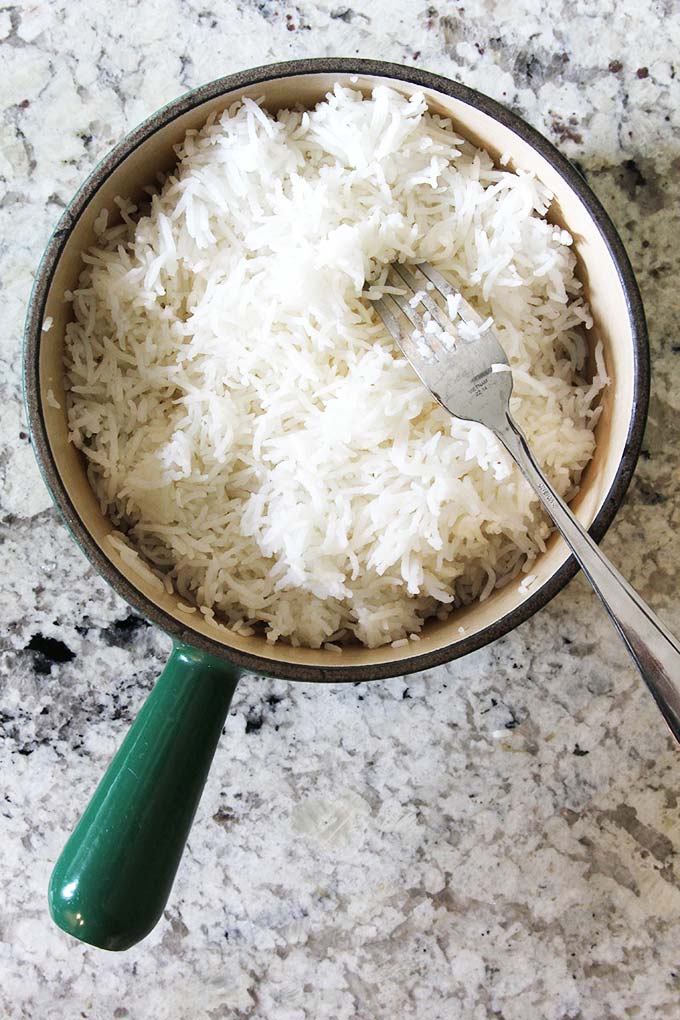
In the West, rice has been criticized by some nutritionists for being sugary and carb-heavy, but you need only look to our Asian friends in the East, who do not have the same weight issues in their cultures compared to North Americans to know that rice isn’t to blame.
When eaten with plenty of vegetables, legumes, meats, and other foods, rice can be a perfectly heavy part of a daily meal.
I also like that we can actually grow rice in California, which means it is a suitable option for us, too, based on the principle that nature generously provides what we need for optimal health in our own backyards.
Even so, any basmati rice you buy will likely be imported. The very best varieties are grown in the Himalayan mountain foothills around Dehradun, India. Other varieties hail from the Himalayas of Pakistan.
The fact that basmati rice is grown in the Himalayas gives it an air of spirituality and preciousness.
In India, basmati is saved for special occasions and specific dishes, such as biryani, pulao, and khichdi.
In the United States, you can use basmati rice whenever you have Indian food. Some students tell me they just love the flavor and enjoy it all the time.
Tips for purchasing the best basmati rice
- Grown in India is the best if you can find it (Dehradun in particular).
- Aged is best because it deepens the flavor and aromatics. Just look for “aged” labelled on the package.
- If you can see the grains, then yellower is better than white. It is a sign of aging.
- If you can see the grains, then look for thickness, length, and grains that are clean, even, and unbroken.
- Rice that is exported to the United States is “export quality” and generally very good, but only after you taste aged basmati will you truly know a good basmati.
My rice recommendation
The rice that I use and find to be the absolute best is Swad Dehraduni Basmati Rice. The grains are even, yellow, large, and clean. When you cook this rice the grains lengthen to impossible proportions and the scent is nutty and aromatic. This 10 pound purchase is not too much. Once you try this, you will probably want to eat it every day.
I have personally been to Dehradun two times. It is a beautiful farming area in the foothills of the Himalayas known for its organic farming culture. Buy this rice on Amazon. (Note that SWAD is no longer available on Amazon, so I am now recommending this Silver Basmati Rice or Pride of India.
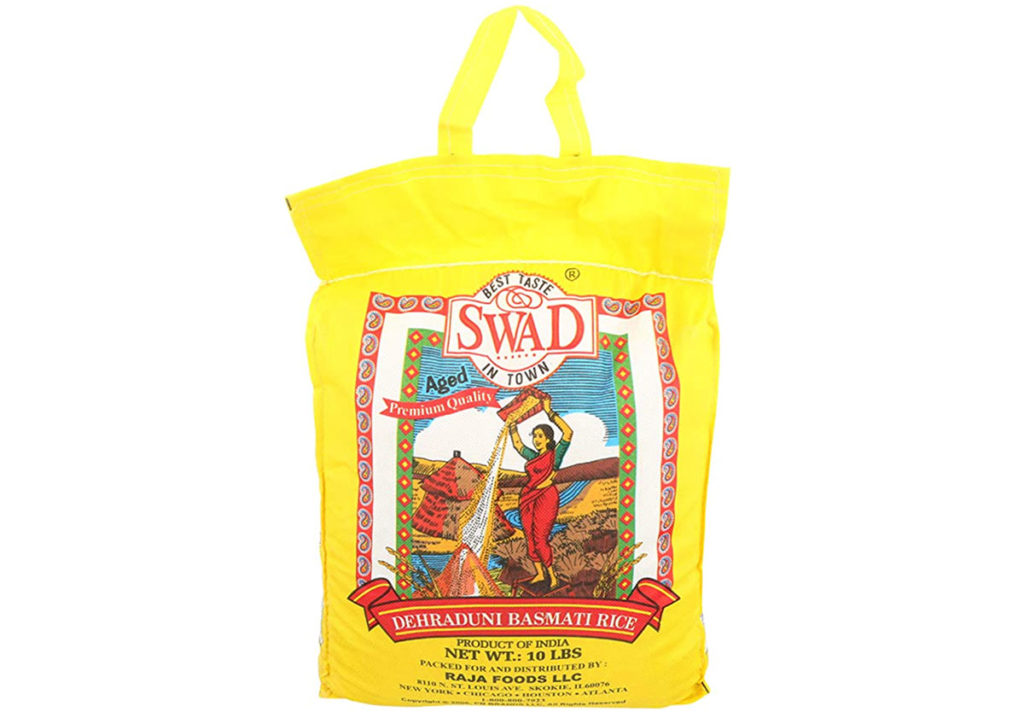
12 rice cooking tips for best digestion
- Always wash your rice before cooking it. The easiest way is to place the rice directly in your saucepan. Dover with cold water and use your fingers to gently stir, and then drain off the water. Do this 1–3 times, until the water runs clear. I typically do it once, and it is sufficient.
- An optional step is to soak your rice for 10–20 minutes before cooking. Soaking increases water absorption as the rice is cooking, but for some rice varieties, it could cause the rice to overcook or get soggy. Be gentle handling the rice after soaking, as the grains will break easily. Use the soaking water as your rice cooking water to preserve valuable nutrients and flavor.
- Start with 1 part rice to 2 parts water. This is what I use with consistently good results. Using more water means the rice gets softer and more hydrated, which increases the digestibility of the rice. Be aware that rice cooks differently based on its age and variety. My advice is to measure the water you use, and note it down so that you can adjust for next time if needed. Some packages call for as little as 1 to 1 1/2, while in India they typically use 1 to 3.
- Be aware that the amount of water you use will affect whether the rice is dry or wet after cooking. If your rice is too dry, simply add a bit more water, and cook longer. If it is too wet, leave the lid off for a minute to allow steam to escape.
- Add a teaspoon of ghee and a pinch of salt to the rice cooking water. Neither of these are necessary, but the bit of fat helps to keep the rice grains separate and fluffy, and salt enhances the flavor.
- Use your heaviest saucepan for cooking rice. The heavy bottom will protect the rice from burning, and the heavy sides will surround the rice with heat, helping it to cook evenly. I love using Staub or Le Creuset’s enameled cast-iron pots for cooking rice. These pots are expensive, but well worth the investment, because you will have them for decades in near-perfect condition.
- Use a pot that is the right size. Allow at least 2 inches between the top of the cooked rice and the lid to allow for steam. Do not try to cook a small amount of rice in a large pot.
- Ensure that your lid is tight fitting and/or heavy. A heavy lid prevents steam from escaping and helps the rice to cook efficiently. If your lid is not heavy, you can try covering the pot with a clean dish towel and then putting on the lid. Pull the edges of the cloth up on top of the lid so it doesn’t accidentally catch fire.
- Do not open the lid while the rice is cooking. As long as you have turned the rice down to very low before covering it, give it between 12-15 minutes to cook before checking for soft rice. Again, the time will vary with the rice age and variety. I use 15 minutes with consistently good results. If you do want to check for doneness, be mindful to do it quickly, and replace the lid as quickly as you can.
- Time your rice to be ready with the rest of your meal. If you do find the rice is going to be ready early, you could turn off the heat early, when the rice is only 90 percent done. Leave the lid on, and the rice will continue to steam and cook.
- If you need to reheat rice for any reason, try steaming it for best results. Another option is to heat the rice in a non-stick skillet with a bit of water. Stir continuously until the rice is hot, and rehydrated. A final option is to use create a new dish with the leftover rice by adding spices and/or vegetables, such as this dish for Broccoli Rice.
- Consider adding a whole cardamom pod (smash slightly with a knife to expose the seeds first) or a few cloves to add flavor and increase fragrance.
Basmati rice recipes
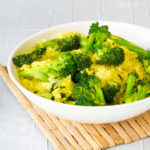
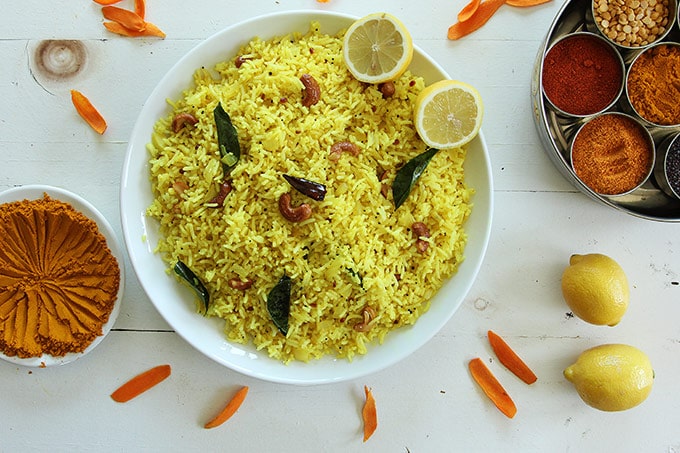
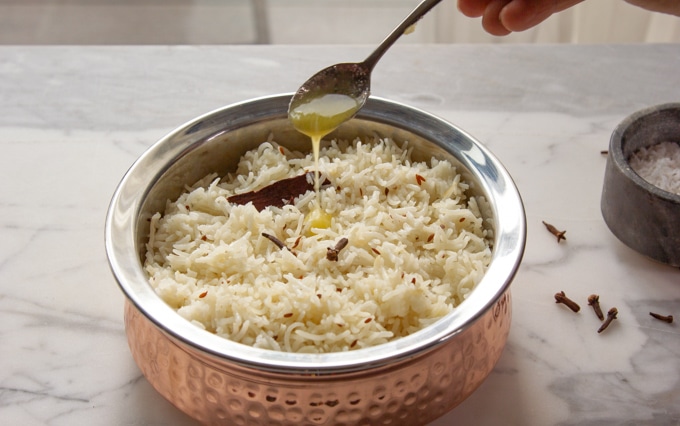
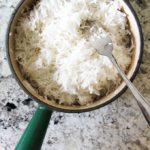
Recipe for Perfect Basmati Rice
Ingredients
- 1 cup basmati rice
- 2 cups cold water
- 1/2 teaspoon ghee
- pinch Himalayan pink salt
Instructions
- Measure the rice into your saucepan and rinse it in cold water 1–3 times. Tip: When you pour out the rinsing water, use a small sieve to prevent any rice grains from falling down the sink.
- Add rice cooking water (2 cups), along with ghee and salt, and bring the rice to a boil on medium-high heat. Gently stir the rice once, turn down the heat to very low, and cover. Simmer, covered for 12-15 minutes. The cooking time depends on the quality of the rice. Better quality aged rice is drier and will take a longer time.
- Turn off the heat, add 1-2 tablespoons of water, and close the lid again for 5 minutes, or until you are ready to eat. The extra water will loosen any rice that may have stuck on the bottom of the pot, and it steams the rice a little further for extra softness.
- Just before serving your perfect basmati rice, fluff it up gently with a fork. Admire the beautiful long grains of your basmati rice and savor the flavor.
